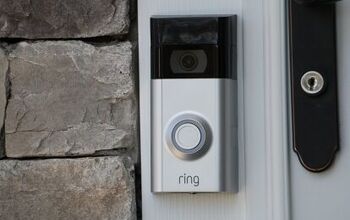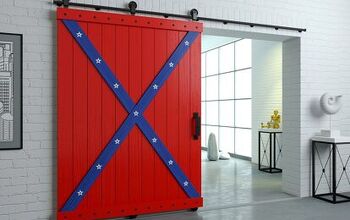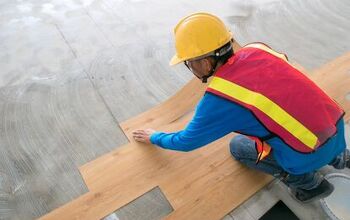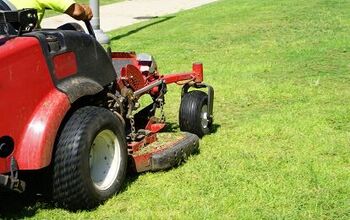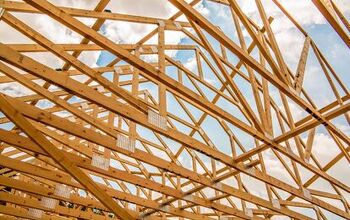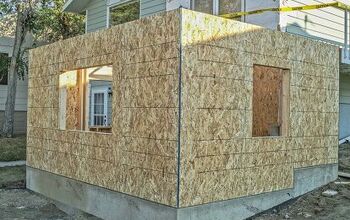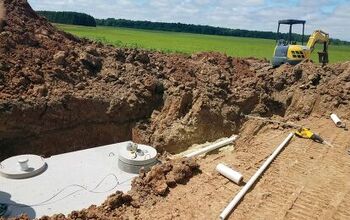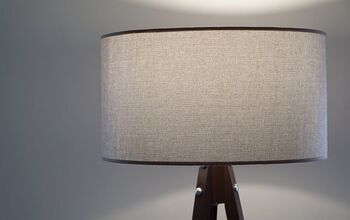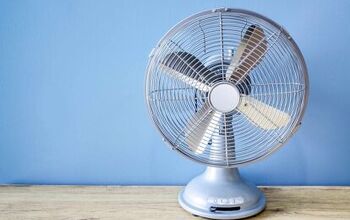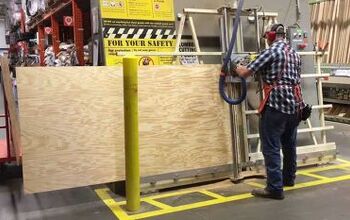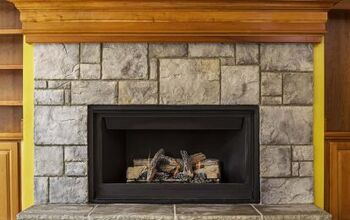12 Ways To Fix Loud And Squeaky Floorboards

If you ever get up in the middle of the night to try to walk through your home quietly, then you know how annoying squeaky floorboards can be. These loud and obnoxious gaps in your floor can start making noise out of nowhere, or slowly get noisier over time. Regardless of how it happened, you should do all you can to silence your floorboards before the noise gets worse.
Some easy ways to stop your floorboards from squeaking include adding wood glue, graphite powder, or even WD40 in the gaps. You can also fix the squeaking by addressing the floor from underneath by adding drilling screws, wedging a shim in the squeaky gap, or filling the space with construction adhesive. If the problem requires major repairs, consider replacing your floor if it’s old, or call in a professional.
A squeaky floorboard rarely goes away on its own. Instead, the problem usually only gets louder and worse. If you notice this annoying sound when you walk on your floor, you should address it sooner rather than later. Sometimes there’s a quick and easy fix, and other times the sound is alerting you to a bigger problem hiding underneath. Keep reading to learn effective ways to silence your squeaking floorboards.
12 Ways To Fix Loud And Squeaky Floor Boards
1. Open The Squeaky Gap With A Putty Knife
Sometimes, floorboards squeak because they are too tight, or there is an issue with how they are aligned. Sometimes this tight friction is what causes the squeaking, and if this is the case, the solution is usually quite simple.
Simply use a putty knife or a thin flat-head screwdriver to wiggle your way into the gap. Use a bit of leverage to separate the floorboards, and try to make a thin and even gap. Creating this gap should prevent the two boards from touching each time you walk on the crack.
2. Use Screws And Plugs To Tighten Loose Boards
Sometimes, individual wood floor panels are squeaky because they aren’t properly connected to the joist below. Often, the best (and only) way to stop this sort of squeaking is to firmly connect the floorboard to the joist. This can be done using screws and wood plugs.
The screws connect the wood to the joist, while the wood plugs help mask the screw. Ensure you choose the right type of wood plugs, and sand and stain the area properly once you plug the hole.
3. Fill Gaps With Adhesive And A Caulking Gun
Since squeaks and other sounds almost always come from gaps between two pieces of wood, the key is to seal the gap. One way you can seal gaps from underneath a wood floor (if you can access it) is to use construction adhesive and a caulking gun.
Apply this very strong glue to the squeaky area wherever you notice the gap. It is likely between the wood floor and a joist. Allow this adhesive enough time to dry. This should close the gap and also stop the loud noise without even having to lift a single heavy tool.
4. Use Baby Powder To Quiet The Squeak
If you know the squeaking issue is due to gaps in your wood floor, you might be able to solve the problem by using a bit of baby powder. Just as this product can help with chafed legs that rub together, it can help with boards that rub and squeak.
Baby powder acts as a lubricant, allowing the wood pieces to slide against each other without making noise. To apply the powder, use a squeeze bottle and target the seams between the boards. Allow it a day or two for it to sink in. You should notice the effects within 48 hours. You will need to repeat this process every few months, as it is not a permanent one-time fix.
5. Sprinkle Powdered Graphite In Your Floorboard Gaps
If you are worried about the powdery white residue that baby powder leaves, consider using graphite powder instead. This is a great option for dark wood floors, as the dark color is easily masked.
You can apply this powder using a clean microfiber rag and wipe up the residuals. This is another powder that can help boards slide silently against each other instead of making loud noises every time they touch.
6. Fill Gaps With PVA Glue
If you want a more permanent solution to your squeaky wood floors, you can fill the gaps with some type of PVA glue. This is something that works well for older floors where there are lots of gaps and squeaks, and you will eventually have to sand or completely replace your wood floor at some point.
Ensure you apply the glue carefully, so all gaps are full but no mess remains. Test a small area and ensure you use a glue that doesn’t have a strong, conflicting color once it's dried. It should blend in and look hardly noticeable. Once the glue hardens, you should notice a much quieter floor when you walk.
7. Use Wooden Shims To Fill Gaps Between Joists And The Floor
If you have access to your floor from below, you can attack the problem from underneath. One of the best ways to fix squeaks caused by a gap between the joist and floor is to put a wedge between the two. You can use several thin wooden shims to easily fill these gaps.
Place them where the gap is largest, and ensure they are inserted enough that you can no longer push the shim without a lot of resistance. You can even add some wood glue to ensure the shim stays in place.
8. Add A Strong New Board Next To An Old Joist
If you notice a joist is warped or slightly damaged, you can add an additional board to support it. Simply secure another strong piece of wood and drill it into the existing joist, but ensure it is touching the floor. This should buy you several more years with the existing joist and may prevent it from warping further.
9. Lubricate The Squeaky Gaps With WD-40
WD-40 can fix squeaky wheels and help remove rust, and it can also be used to quiet loud noises coming from your wood floors. When using WD-40, you must be very careful and only spray in the gaps where you know there is squeaking.
Using too much of this liquid lubricant can make your floors very slippery for a long time. Immediately wipe up any access and spot clean the floor before you allow guests to walk on it.
10. Replace The Joists As Needed
Sometimes you can’t put a band-aid on the problem, and instead, a joist must be replaced. This happens when a joist has rotted or warped significantly. You can replace the damaged wood with fresh new wood.
Ensure the new joist lines up with the floor, and you can even use a shim or other methods listed above to help secure the new joist to the floor above.
11. Replace Your Loud Old Floors With New Ones
If your floors are squeaky because they are old, warped, and even partially rotted, then interpret these obnoxious noises as a call to action. It may be time to get new floors. New wood floors are expensive, but if you properly budget and do some of the work yourself, it can be more affordable.
12. Call In A Professional
It’s important you know your limits. Just about anyone can sprinkle baby powder or graphite on floors, and a shim is fairly simple to wedge into a gap. But replacing joists and drilling into wood floors is something you should only do if you have experience and confidence.
Don’t be afraid to call in a professional. Get a few quotes and see if it is worth getting a new floor or just fixing the squeaking with a temporary fix for a few years. The last thing you want to do is make the problem worse by trying to do something outside your comfort zone.
Final Notes On How To Silence Your Squeaky Floorboards
Wood floors are beautiful to look at, but they can sound really ugly. There’s nothing more annoying than squeaky floorboards in the middle of the night. If you have this problem, you can use wood glue, baby powder, powdered graphite, or even WD-40 between the cracks.
If you can access the floor from below, wedge a shim in any problematic gap between the floor and the joist, or use construction adhesive to seal the gap. Replace warped and rotted joists and consider hiring a professional if the project becomes too complicated.
Related Guides:
- What Is The Best Way To Clean Hardwood Floors?
- Can You Install Vinyl Floor Planking On Uneven Floor?
- White Oak Vs. Red Oak Flooring: Which Is Best?

Tom Gaffey is an expert writer who currently resides in Washington D.C. Tom has a passion for real estate and home improvement writing, as well as travel and lifestyle writing. He lived the last twelve years in Hawaii where he worked closely with luxury resorts and event planners, mastering his knowledge of aesthetics and luxury products. This is where he found his passion for home improvement and a keen interest in DIY projects. Currently, Tom resides in Washington D.C, and also working on his debut fiction novel.
More by Tom Gaffey










